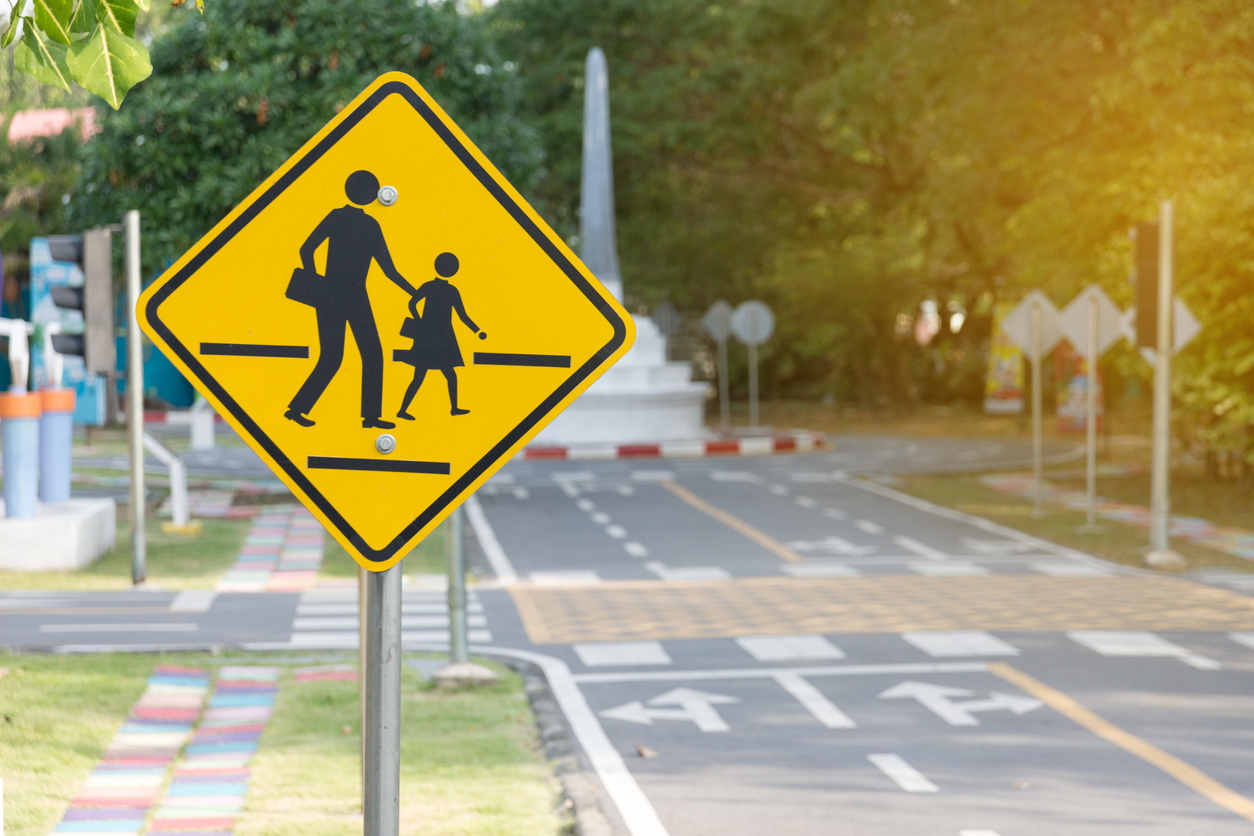Thousands of pedestrians are killed and injured in motor vehicle accidents each year in the United States. Pedestrians are 1.5 times more likely to be killed in a car crash than occupants in passenger vehicles. In 2019, over 6,000 pedestrians were killed in traffic accidents.
Pedestrian fatalities have risen to the highest levels since 1990. Consequently, federal, state, and local governments are searching for ways to protect pedestrians and prioritize their safety. Pedestrian safety campaigns are one way to decrease the number of pedestrian accidents.
Below are eight elements of a successful pedestrian safety campaign.
Planning
An effective pedestrian safety campaign encompasses several goals, including:
- Education and engagement
- Practical engineering to improve infrastructure
- Focused enforcement
- Diversity
- Protection from harm
- Evaluation
How do you accomplish all of your goals? The first step is planning. In the planning phase, you want to work with a wide range of partners.
This collaboration allows you to gather all relevant information related to pedestrian safety in your area.
Examples of potential partners include:
- Government agencies
- Community groups
- Businesses
- Law enforcement agencies
- Civic organizations
Use public announcements, advertising, and other marketing methods to ask potential partners for input on your pedestrian safety campaign.
You should also develop relationships with local media outlets. They will be invaluable when you are ready to launch your pedestrian safety campaign.
Involving Stakeholders
Your partners need to feel that they are stakeholders in the outcome of the campaign. For example, you should coordinate with the local judiciary about the details of your campaign to ensure that you comply with all local laws. You should also discuss your plans with engineering representatives to ensure your locations are suitable for various operations.
You should utilize local law enforcement agencies to identify areas for operations based on crash data. You can also reach out to the community for input on intersections and roads that are dangerous for pedestrians.
Analyzing Information
Once you gather all information and data needed to prepare a pedestrian safety campaign, you need to analyze the data and information. Consider hiring traffic experts to assist with this step. Experts organize your data and produce usable reports on pedestrian accidents.
Identifying Pedestrian Safety Concerns
Based on the reports and data, identify pedestrian safety concerns in your community. For example, there could be several intersections or areas that appear highly hazardous to pedestrians. Determine why pedestrians are at risk and what changes need to be made to improve safety.
Prioritizing Concerns
Prioritize pedestrian safety concerns. Establish clearly defined goals based on safety concerns. Each goal should have a definite, measurable outcome.
For example, pedestrians may be concerned about certain intersections without pedestrian traffic controls. In this case, you would first decide how many intersections need controls and set a reasonable goal for installing pedestrian traffic controls at these locations. Then, you can easily measure whether you met this goal at the end of the pedestrian safety campaign.
Obtaining Funding
Funding can be an issue when developing a pedestrian safety campaign. Therefore, you need to establish a budget before beginning your project. Funds may come from federal, state, and local government agencies.
However, you should also reach out to businesses, non-profit organizations, and other parties to seek funding for your project. Your stakeholders should be financially invested in your project. When a party is financially invested in a project, they are more likely to give their time and resources to ensure its success.
Design and Produce Materials
Consider hiring a design and marketing firm to assist with your marketing and educational materials. You need eye-catching, bold, and memorable materials for a successful pedestrian safety campaign. You also need a variety of materials, including pamphlets, posters, brochures, videos, and compelling content.
Design and marketing professionals can ensure your branding is consistent across content. Consistent branding helps people remember the information. You also need a catchy, memorable motto for your campaign.
Implementation and Follow-Up
Train police officers on the goals and objectives for the pedestrian safety campaign. As the safety program begins, use warnings instead of traffic citations to educate motorists and pedestrians about pedestrian safety and applicable traffic laws. Consider handing out education material with warnings.
Timing is everything. Ensure that all partners and parties understand the timeline for the campaign kickoff and each additional stage of the campaign. Everyone should understand their roles throughout the campaign.
Do not forget to develop evaluation procedures to measure the success of your campaign. For example, did pedestrian accidents decrease, was there heightened awareness of pedestrian safety, and were you able to meet each of your goals?
Communicate the results to media outlets and campaign partners. Evaluate the results and follow up with law enforcement agencies, city engineers and planners, and other parties to continue moving forward on long-term projects to enhance pedestrian safety.
Key Takeaways for a Successful Pedestrian Safety Campaign
The key takeaways for a successful pedestrian campaign are simple: planning, planning, and more planning. Tailor your campaign to the needs of your community. Each community has different pedestrian safety concerns. Do not forget to evaluate and follow up. Annual campaigns are perfect for accomplishing long-term goals for pedestrian safety.


